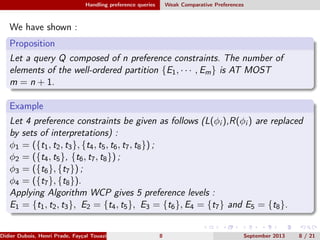The following is a report on how my article on philosophy placement records was made.
The Madness
I gathered the placement records from each of the schools listed in The Leiter Report when they were available. Thus, I had the placement records from approximately 70 different schools in the US, UK, AU, and CA. There were many difficulties in sorting through this data and combining it into a common and useful format, so much so that what should have taken a few hours took a few months of SQL querying, Excel formulas, and manual copying/pasting/editing. The difficulties included:
- Missing Data
- Area of Specialty
- This was provided by some schools, but not by others, and when it was provided, it was often grouped together with secondary specialties or other data.
- Dissertation
- Many schools did not provide a dissertation title from which I could attempt to derive an area of specialty. As such, I had to leave the area of specialty blank.
- Initial Placement
- Some schools only had the current placement of a student, which does not help one to figure out the initial placement for students in a program. If I want to know the answer to the question, “where will I start off my career after going to this school?”, then this data must be included.
- Current Placement
- Some schools only had the initial placement of a student, which does not help one to figure out the current placement for students in a program. If I want to know the answer to the question, “where will I end my career after going to this school?”, then this data must be included.
- Type of Placement
- Many schools did not explain what type of placement a student had made at a particular university. Was it temporary? Tenure-track? Permanent? Post-doctoral? This makes a huge difference in the assessment of a school’s placement ability.
- School Names
- School names were almost always provided (although not always matched up with a student). However, these names were often incomplete. For example, which school does “Cal State” refer to? California State University, Northridge? California State University, Long Beach? California State University, San Bernardino? How about “St. Mary’s”, “Boston”, “University of Illinois”, “Loyola”, or “Victoria University”? Each of these names could refer to several different college or universities. Did you know that there is a “Cornell College” and a “Northwestern College“? As such, putting only “Cornell” or “Northwestern” will not suffice.
- Attrition
- Many schools do not include any information about attrition, that is, students leaving the program before completing it. Such information would be useful to know, since all most schools report is how many students actually complete the program. But this does not help prospective students to get a sense of how many students enroll in the program, how many complete the program, and how many drop out of the program.
- Indeterminate Data
- Dissertation
- Oftentimes, it was impossible to determine what a dissertation was about. For example, what is the dissertation “Knowing What Follows” about? How about “Meaning Without Theory”, “The View from a Rare Oasis”, “Seeing Through”, “Space of Exclusion and Inclusion”, or “The Employment of Intrinsically Defined Representations and Functions”? These may be appropriate titles for dissertations, but in terms of helping me understand what philosophical subject they were about, they were useless.
- Type of Placement
- Many schools did provide information about the type of placement made, but it was not clear what this meant. For example, sometimes an Assistant Professor was a tenure-track position, but other times it was not. Some Lecturers had the equivalent of tenure-track position (this is especially true in the UK and AU), but other times it meant that it was only a temporary, year-to-year, contract job. Some research positions were full time and prestigious honors while others were ordinary post-docs. In other words, it was often not clear whether a title meant that the position was post-doctoral, temporary, full time, tenure-track, or tenured (or equivalent).
- Unorganized and Sloppy Data
- School Names
- When I could tell which school a name was referring to, I often still had to do some manual clean up. “Cambridge University” and “University of Cambridge” may mean the same thing to us, but they don’t to a computer, and as such, are treated as different entities until one is manually changed to the other. “Lawrence College” and “Lawrence University” are in fact the same institution, but again, a computer can’t tell the difference. Here are some other examples, all of which refer to the “University of Notre Dame”: “U. Notre Dame”, “Univ Notre Dame”, “Notre Dame University”, “U Notre Dame”, “Notre Dame”, “Universty of Notre Dame”, “Universtiy of Notre Dame,” and the list goes on and on for the number of ways one can spell, abbreviate, and misspell a name.
- Data not in tables
- Most of the time, the data I encountered was not in a table format. Usually the data came in some sort of list, with the year of graduation posted, followed by each student that graduated that year and their information. Usually their information was not listed on the same line as their name, so I had to manually use macros to match up their information with their name so all of the data for a student would be on a single line. Even then, the data would now be in the form: “LastName, Firstname. Dissertation (maybe). AreaOfSpecialty(maybe). SchoolName (initial placement? current placement), title (tenure-tack? temporary?), (year-maybe); SchoolName (initial placement? current placement), title (tenure-tack? temporary?), (year-maybe);SchoolName (initial placement? current placement), title (tenure-tack? temporary?), (year-maybe)… and so on. Even this would not be a problem if this format was used across all schools and there was never any missing data. However, this was not the case. Sometimes a name was missing, or the first-name would be first, or the schools would be mixed around, or no titles would be listed… The formats for presenting the data varied from school to school, and at least half of them required a personal macro or hours or copy/paste.
- All Graduates Not Listed in Placement Record
- Sometimes the list of all graduates is on one webpage (possibly, a non-departmental page), while the placement record’s page only includes those students that are placed. There are legitimate reasons for doing so (e.g., the placement record reflects those who used the department’s placement services). However, prospective students need to get a sense of how many students total graduated from the program, and what all of them are doing now. As such, it would useful if at the very least, departments included a link to the total list of graduates on their placement records page.
I list these difficulties not to complain (ok, a little bit), but for two important reasons. First, given the nature and number of these difficulties, I hope you will forgive me if I have unfairly and sometimes substantially increased or decreased any school’s placement ranking. I am fairly confident that my rankings with respect to current positions coming from US PhD programs are trustworthy. However, I am less certain about initial placements from US schools, since I had to make a lot of inferences as to which school was the initial placement and what type of placement it was. I am even less certain about programs in AU and the UK, since their terminology differs from our own (e.g., a “lectureship” in AU often means the same thing as a tenure-track position in the US). So please take my rankings with a grain of salt. This is a first attempt at a difficult problem.
Second, if placement records are to be of any use at all to prospective students, then they need to be understandable within each school’s presentation of data. That means that school names need to be clear, position types need to be specified, and all important information needs to be present. Otherwise, prospective students will not be able to have a good sense of how the school places its students. Furthermore, if placement records are to be of any use at all to prospective students, then they need to be comparable across all schools. I do not know how well “Rutgers University, New Brunswick” places its students until I can directly compare, point by point, how it matches with the placement at “New York University”. If the data are presented differently enough, I might as well be comparing apples and oranges. Even if I am comparing apples and apples, if it takes me an hour or two to convert one format of data to the same format as another set of data, then it is extremely difficult and time consuming to make any sort of effective comparison. I kid you not, I have been working on combining this data for a couple months now, and if the data had been presented more effectively and efficiently, it would have only taken a day. It should not take months for a prospective graduate student to gather and combine the data necessary to make a good decision with respect to job placement.
The Method
As I said before, I gathered the placement data from all of the schools listed on The Leiter Report where it was available. From this data, I created a data set with the following columns:
- FirstName
- The first name of the student. When it was not available, I used a number as an ID for the student.
- LastName
- The last name of the student. When it was not available, I used a number as an ID for the student.
- Gender
- This column had the values of “Male”, “Female”, and “Unknown”. I had to infer the gender of each student from the first name provided. To do so, I gathered lists of common male and female names, and when a student’s name matched a name in the list, I assigned that student the gender associated with that name. When I could not determine the gender of the student, I assigned the value “Unknown”.
- PhDSchool
- The school at which the student earned his or her PhD. I used the school names as listed on The Leiter Report.
- FirstPlacementSchool
- The name of the school at which the student received his or her first job placement.
- FirstPlacementType
- The type of first placement a student received. I grouped the many types I saw into the following categories and assigned each student to one of them:
- Lecturer/Temporary – any placement that was not a permanent teaching position. This included some types of assistant professors, lecturers, visiting professors, and yearly contracts.
- Tenure Track/Permanent – any placement that was a permanent position (though not tenured). This included most assistant professors, permanent lecturers, and permanent researchers.
- Tenured – any placement that was a tenured position or equivalent. This included most associate and full professors and senior lecturers.
- Not In Academic Philosophy – any placement that was a position outside of academic philosophy. This included private sector jobs, administrative jobs in academia, and some non-profit positions. It also included any students that were still seeking or could not find academic philosophy positions.
- Unknown – any placement that was unknown or indeterminable.
- The type of first placement a student received. I grouped the many types I saw into the following categories and assigned each student to one of them:
- CurrentPlacementSchool
- The name of the school at which the student received his or her current job placement.
- CurrentPlacementType
- The type of current placement a student received. These took on the same values as those listed above.
- Dissertation
- The name of the student’s dissertation. When this was not provided, a value of “Unknown” was assigned.
- PrimaryAreaOfStudy
- The primary area of study. When this was provided, it was listed under one of the following categories: Aesthetics, Continental Philosophy, Epistemology, Metaphysics, Philosophy of Mind, Philosophy of Language, Philosophy of Science, Social and Political Philosophy, Philosophy of Mathematics, Philosophy of Logic, Ethics, History of Philosophy, and Unknown. When this was not provided, it was inferred using keywords from the dissertation title (e.g., the keyword “consequentialism” suggests a primary area of study of “Ethics”). Any unknown or indeterminable primary areas of study were assigned “Unknown”.
- YearGraduated
- The year the student received his or her PhD.
All of my analyses are based off of my data set using these columns and meanings.
Moving Forward
Schools can offer better guidance to prospective students by keeping their placement records neat, complete, and organized in an easily readable, understandable, and flexible format. I believe the format I have used provides all of the information that a student would be interested in concerning a school’s placement record. If schools use a format like the one presented above, then students can quickly and painlessly compare how different schools rank in their placement, further helping them to make the right decision for themselves as they consider a career in academic philosophy.
If you believe I have grossly misrepresented your school (especially if your school is in the UK or AU) and would like me to correct it, please send me a .csv file, using the same columns and meanings that I have given above, with all of the corrected information. I will update the related article as often as necessary to keep the data current, correct, and fair. Ideally, this dataset will eventually be on par with The Leiter Report in terms of accuracy, comprehensiveness, and usefulness to graduate students in philosophy.
Thanks,
Andy Carson
Philosophy News








